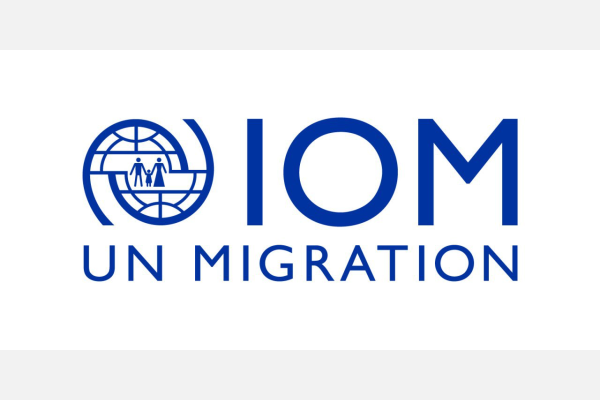Repository of Practices

Migrant Resource Centers
Secondary GCM Objectives
Dates
Type of practice
Summary
According to estimates by UNDESA, in 2020, 2.3 million people residing in Argentina were born abroad (5% of the total population), and the migrants aged between 20 and 64 years old made up 68.4%. This suggests that most of the migrant population arriving in Argentina are migrants workers, but many migrants work in the informal sector and lack access to services and documentation. According to the 2019 Permanent Household Survey, the majority of the employed migrants work in sectors which tend to have low wages and precarious working conditions, such as manufacturing (13.4%), domestic service (15.9%), retail trade and repairs (21%) and construction (18.3%). In terms of documentation, migrants lack access to Argentina's National Identity Card, which in many cases is required for access to different services. However, migrants are eligible to receive public health services and education, regardless of their status and years of residence in the country. This was the case for social assistance programs launched to mitigate the economic impact of the Covid-19 pandemic. Thus it is important to develop and implement public policies that ensure access to information, social services and means for integration to address inequalities and social and economic barriers for migrants.
The National Directorate for Migration and the National Secretary for Human Rights, with the technical and financial support of IOM, have developed a national programme to provide information, assistance and trainings to migrants and refugees in Argentina. This programme aims to create a space that gathers several ministries at a single service point to provide holistic settlement support to migrants to ensure their protection and integration in Argentina, and has supported the creation and management of migrant resource centers.
The first center, located in Buenos Aires, opened in December 2017, and recently moved to a bigger space on a government property, which will help it stay open. Another center opened its doors in Rosario City, in the province of Santa Fe in October 2019. Two additional centers are expected to open in the near future in the city of La Plata, and more centers are being planned in key border checkpoints and other large cities with a high density of migrant population, such as Cordoba and Mendoza.
The staff working at the centers are government officials from the National Migration Directorate and the National Secretary of Human Rights. In addition, IOM consultants work full-time in all centers providing technical support, and UNHCR consultants provide assistance to refugees and asylum seekers. In terms of protection, the center refers cases to the ministry of social development and ministry of health, provide information and advice to asylum seekers, supports migrants in obtaining appointments for documentation, and provides information on different social service
Organizations
Main Implementing Organization(s)
Detailed Information
Partner/Donor Organizations
Benefit and Impact
The handbook focuses on developing tools for management of an MRRC, and includes 10 steps: setting goals; identifying needs; defining services and activities; identifying opportunities and challenges; developing SOPs; mapping out key actors; communication and visibility; monitoring and evaluation; and finally, well-being of the staff working at the centers. It provides several considerations for women who use the Centre, such as creating a safe space for those who were subject to gender-based violence (GBV) and nursery to allow mothers to participate in training or workshops. In addition, the handbook offers a set of 20 practical tools such as examples of SOPs, referral mechanisms, admission charters, a welcome kit, and a template to develop a communication strategy. Four training sessions to strengthen the staff’s capacity are also included. The GoA was involved in developing the handbook by providing inputs and also reviewed the final version.
MRRCs receive hundreds of migrants daily who visit the centers in search of information, orientation, and protection. In the short term, migrants benefit from accessing services with less barriers and in the medium term, it is expected that migrants will be integrated to the local communities more easily.
Key Lessons
Recommendations(if the practice is to be replicated)
In terms of project sustainability, the government leadership is key. Therefore, it is important to build a strong relationship with government partners and to continue to advocate for this type of initiatives as part of public programmes for migrants.
Innovation
Being able to integrate the provision of services avoids fragmentation and disconnection among different public offices.
Likewise, these centers contribute to the strengthening of the integration of migrants in Argentina, given that it is a space where workshops on Spanish language, interculturality are given, assistance is provided with a focus on gender and childhood.
This practice can be replicated in different provinces of Argentina and in any country,
Additional Resources
Date submitted:
Disclaimer: The content of this practice reflects the views of the implementers and does not necessarily reflect the views of the United Nations, the United Nations Network on Migration, and its members.
More Related Practices:
- Tablero Interactivo Estadísticas sobre Movilidad y Migración Internacional en México
- Encuesta Nacional Migrante de la Argentina (ENMA)
- Cultural advisories in the services of maternity´s health for the indigenous cross-border community Ngäbe Bugle (WHP)
- A Journey of a Thousand Mile Begins with a single Step: Djibouti’s Experience in Strengthening Migration and Displacement Data Governance
- A designated migration module for processing comprehensive migration data in the existing Information Monitoring and Evaluation system of TB patients in the Republic of Moldova (SIME TB)
Peer Reviewer Feedback:
*References to Kosovo shall be understood to be in the context of United Nations Security Council resolution 1244 (1999).
Newsletter
Subscribe to our newsletter.